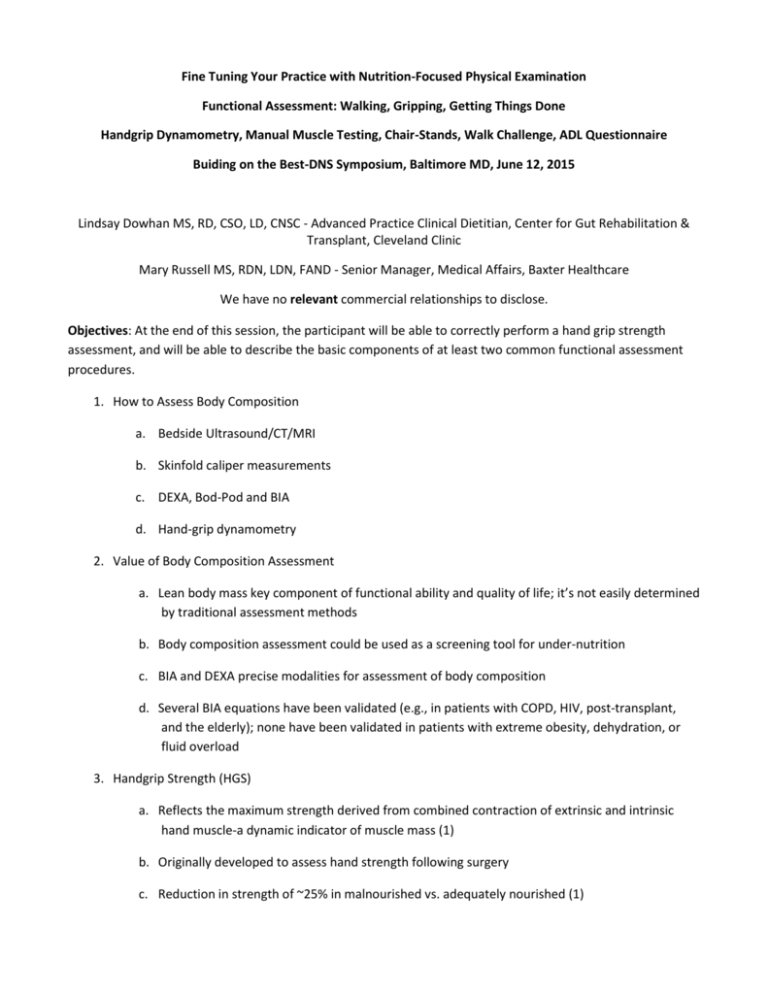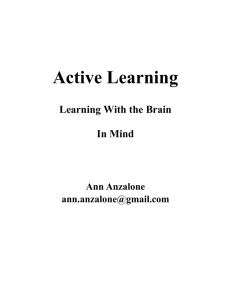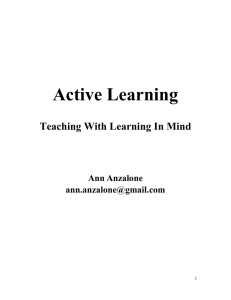Presentation - Dietitians in Nutrition Support
advertisement

Fine Tuning Your Practice with Nutrition-Focused Physical Examination Functional Assessment: Walking, Gripping, Getting Things Done Handgrip Dynamometry, Manual Muscle Testing, Chair-Stands, Walk Challenge, ADL Questionnaire Buiding on the Best-DNS Symposium, Baltimore MD, June 12, 2015 Lindsay Dowhan MS, RD, CSO, LD, CNSC - Advanced Practice Clinical Dietitian, Center for Gut Rehabilitation & Transplant, Cleveland Clinic Mary Russell MS, RDN, LDN, FAND - Senior Manager, Medical Affairs, Baxter Healthcare We have no relevant commercial relationships to disclose. Objectives: At the end of this session, the participant will be able to correctly perform a hand grip strength assessment, and will be able to describe the basic components of at least two common functional assessment procedures. 1. How to Assess Body Composition a. Bedside Ultrasound/CT/MRI b. Skinfold caliper measurements c. DEXA, Bod-Pod and BIA d. Hand-grip dynamometry 2. Value of Body Composition Assessment a. Lean body mass key component of functional ability and quality of life; it’s not easily determined by traditional assessment methods b. Body composition assessment could be used as a screening tool for under-nutrition c. BIA and DEXA precise modalities for assessment of body composition d. Several BIA equations have been validated (e.g., in patients with COPD, HIV, post-transplant, and the elderly); none have been validated in patients with extreme obesity, dehydration, or fluid overload 3. Handgrip Strength (HGS) a. Reflects the maximum strength derived from combined contraction of extrinsic and intrinsic hand muscle-a dynamic indicator of muscle mass (1) b. Originally developed to assess hand strength following surgery c. Reduction in strength of ~25% in malnourished vs. adequately nourished (1) 4. Application in Practice a. Academy/A.S.P.E.N. Consensus Statement recommends use for identification & documentation of malnutrition (3) b. Potentially valuable settings a. Weight loss surgery, dialysis (including home), oncology centers b. Hospitalized patients, particularly pre- and post-surgery c. Outpatient clinics 5. Recovery – weight gain does not translate to > FFM (1) a. Myopathic changes seen after 2 weeks of starvation; alterations in muscle contraction patterns noted b. Overall pathogenesis of muscle dysfunction unclear 6. Decreased HGS in elderly suggestive of decreased functional status, increased fall risk. Increased chance of disability, increased mortality 7. Factors that influence HGS, in addition to nutritional status: a. Age b. Gender c. Obesity d. Physical Activity e. Depression f. Disease severity g. Clinical status h. Medications (e.g., muscle relaxants, corticosteroids) i. Immobilization/bed rest Table: Advantages and Limitations of Using Hand-Grip Strength Measurements (1, 8-12, 14) Advantages Responds earlier to nutritional deprivation and repletion than other body composition assessments Disadvantages Reflects only upper body strength – but has been shown to correlate to criteria such as knee extension strength Standards for defining malnourished state not Correlated with SGA in some groups studied available (<10% of range has been used) Correlated with clinical outcomes Reliability affected by posture, dominants vs. non-dominant hand, dynamometer model Non-invasive Inexpensive Patient must be motivated, and given visual feedback/verbal encouragement Easy to perform Regular calibration required Objective Assessors must be trained Relatively low observer and intra-individual variability Must be adjusted to hand size Predicts length of stay, post-op complications,all-cause mortality in middleaged and elderly, loss of functional status, 15yr fracture risk in perimenopausal women May not reflect nutritional status in people > 75 years Normative Grip Strength Data Sammons Preston Roylan. Jamar® Hydraulic Hand Dynamometer Owner’s Manual Demonstration and Practice: Proper Grip Strength Testing Procedures 1. Sit, shoulder adducted. 2. Elbow flexed 90 degrees, forearm in neutral position. 3. Three measurements 4. Dominant versus non-dominant hand Figure. Hypotheses for the Pathogenesis of Impaired Muscle Function in Malnutrition (1). 8. Functional Status Assessment may help to determine: a. Presence or severity of disease b. Level of care an individual may need c. Status changes over time 9. Components of Functional Status Assessment a. Vision, hearing, mobility, continence b. Nutrition, mental status, affect c. Home support & ADLs 10. Functional Status (15) Assessment Tools commonly used a. 6-minute walk test (16) b. Get-up and Go (17) Instructions: Ask the patient to perform the following series of maneuvers: 1. Sit comfortably in a straight-backed chair. 2. Rise from the chair. 3. Stand still momentarily. 4. Walk a short distance (approximately 3 meters). 5. Turn around. 6. Walk back to the chair. 7. Turn around. 8. Sit down in the chair. Scoring: Observe the patient's movements for any deviation from a confident, normal performance. Use the following scale: 1 = Normal 2 = Very slightly abnormal 3 = Mildly abnormal 4 = Moderately abnormal 5 = Severely abnormal "Normal" indicates that the patient gave no evidence of being at risk of falling during the test or at any other time. "Severely abnormal" indicates that the patient appeared at risk of falling during the test. Intermediate grades reflect the presence of any of the following as indicators of the possibility of falling: undue slowness, hesitancy, abnormal movements of the trunk or upper limbs,staggering, stumbling. A patient with a score of 3 or more on the Get-up and Go Test is at risk of falling. c. Karnofsky Performance Status Scale (18) 11. Manual Muscle Testing (MMT) a. Evaluates the strength of muscle groups to determine impairment and asymmetry (19) b. Subject is asked to move a limb against gravity and, if able, against manual resistance provided by a clinician c. Muscle strength is generally graded on a scale from 0 to 5 with 0 corresponding to no evidence of contractility and 5 reflecting full range of motion against full resistance d. MMT includes a degree of subjectivity, especially in judging resistance, but reliability can be improved by using the same tester, using consistent testing procedures, and preventing the subject from using collateral muscles to compensate for a deficit in performance. 12. MMT scoring system (20) Score Description 0 No visible or palpable muscle contraction 1 Visible or palpable contraction, however no range of motion 1+ Moves limb without gravity loading less than one half of range of motion 2- Moves limb without gravity loading greater than one half of range of motion 2 Moves full range of motion, gravity is eliminated 2+ Moves against gravity less than one half range of motion 3- Moves against gravity greater than one half range of motion 3 Moves full range of motion against gravity 3+ Moves against gravity with moderate resistance less than one half range of motion 4- Moves against gravity with moderate resistance greater than one half range of motion 4 Moves full range of motion against gravity and has moderate resistance 5 Moves full range of motion against gravity and has maximal resistance 13. Advantages to using MMT a. Reliable testing methods for functional status (19) b. Simple, quick, noninvasive, and easy to perform c. Requires no equipment and can evaluate muscle groups from both the upper and lower body d. Can be customized to compensate for individuals with physical limitations e. Safe procedure which can be easily incorporated into a nutrition-focused physical examination 14. MMT procedures Bed Test Primary Muscle(s) Position Procedure Hip extension Gluteus maximus; semitendinosus; semimembranosu s; biceps femoris HOB 30º Starting position: leg resting on surface of bed, knee straight, with foot at rest. Foot of bed flat ROM: Ask subject to raise leg off bed surface while keeping knee straight. MMT: Ask subject to raise leg off bed surface while keeping knee straight. Stabilize knee joint by lightly placing one hand over knee, palm facing downward. Place other hand under lower leg just above ankle, palm facing upward. Ask subject to lower leg while applying upward pressure. Verbal instructions: “Bring your foot down. Don’t let me lift your leg.” Ankle dorsiflexion Tibialis anterior HOB 30º 50º Foot of bed flat Starting position: leg resting on surface of bed, knee straight, with foot at rest. ROM: Ask subject to raise foot so toes point towards head, then point toes away from body while keeping leg in same position. MMT: Start with subject’s leg resting on surface of bed, knee straight, bottom of foot at 90º angle to lower leg with toes pointing upward. Stabilize ankle by placing one hand, palm facing downward, on leg just above the ankle, and the other hand on the superior surface of the foot. Ask subject to raise foot so toes point towards head while applying opposite pressure. Verbal instructions: “Bring your foot up. Hold it. Don’t let me push it down.” Elbow flexion Biceps brachii; brachialis; brachioradialis HOB 50º Starting position: arms relaxed at sides with palms facing towards body Foot of bed flat ROM: Ask subject to bend elbow while keeping palm facing towards body and bring wrist to shoulder. If subject unable to complete full range of motion against gravity, assist patient in holding upper arm at 90º angle to body by supporting arm under wrist and elbow. Ask patient to move wrist towards body by keeping upper arm stable and bending elbow. MMT: Ask subject to keep arm at side and bend elbow at 90º angle while keeping palm facing towards body and hold in flexed position. Place one hand on shoulder to stabilize joint and the other hand, palm facing downwards, on the inside of the subject’s wrist. Ask the subject to hold arm in flexed position while applying downward pressure. Verbal instructions: “Hold it. Don’t let me pull it down.” Elbow extension Triceps brachii HOB 50º Starting position: arms relaxed at sides with palms facing upwards Foot of bed flat ROM: same as elbow flexion. If subject unable to complete full range of motion against gravity, assist patient in holding upper arm at 90º angle to body by supporting arm under wrist and elbow. Ask patient to bend elbow at 90º angle, then try to straighten arm by unbending elbow while keeping upper arm in the same position. MMT: Ask subject to keep arm at side and bend elbow at 90º angle while keeping palm facing towards body and hold in flexed position. Place one hand underneath elbow, palm facing upward, to stabilize joint. Place the other hand underneath the subject’s wrist, palm facing upward. Ask the subject to hold arm in flexed position while applying pressure to move wrist towards shoulder. Verbal instructions: “Hold it. Don’t let me push your arm.” Shoulder flexion Deltoids; coracobrachialis HOB 50º Starting position: arms at sides, elbows slightly flexed, palms facing down. Foot of bed flat ROM: Ask subject to raise arm vertically above head while keeping elbow straight MMT: Ask patient to raise arm parallel to floor, palm facing downward, with elbow straight. Place one hand on shoulder to stabilize joint and the other hand, palm facing downward, on the subject’s arm just above the elbow. Ask the subject to hold arm in same position while applying downward pressure. Verbal instructions: “Hold it. Don’t let me move your arm.” References 1. Norman K, Schutz T, Kemps M, Josef LH, Lochs H, Pirlich M. The Subjective Global Assessment reliably identifies malnutrition-related muscle dysfunction. Clin Nutr. 2005;24:143-150. 2. Windsor JA, Hill GL. Grip strength: a measure of the proportion of protein loss in surgical patients. Br J Surg. 1988;75:880-882. 3. White JV, Jensen G, Malone A, et al. Consensus Statement: Academy of Nutrition and Dietetics and American Society for Parenteral and Enteral Nutrition: Characteristics recommended for identification and documentation of malnutrition (undernutrition). JPEN J Parenter Enteral Nutr. 2012;36:275-283. 4. Webb AR, Newman, LA, Taylor M, Keogh JB. Handgrip dynamometry as predictor of postoperative complications reappraisal using age standardized grip strengths. JPEN J Parenter Enteral Nutr. 1989;13:30-33. 5. Baldwin CE, Paratz JD, Bersten AD. Muscle strength assessment in critically ill patients with handheld dynamometry: An investigation of reliability, minimal detectable change, and time to peak force generation. J Crit Care 2013; 28:77-86. 6. Bohannon RW. Hand-grip dynamometry predicts future outcomes in aging J Geriatr Phys Ther. 2008;31:3-10 7. Matos, LC et al. Handgrip strength as a hospital admission nutritional risk screening method. European Journal of Clinical Nutrition. 2007; 61(9): 1128-1135. 8. Stenholm S, Sallinen J, Koster A, et al. Association between obesity history and hand drip strength in older adults – exploring the roles of inflammation and insulin resistance as mediating factors. J Gerontol Biol Sci Med Sci. 2001;66(3):341-348. 9. Krause KE, et al. Sarcopenia and predictors of the fat free mass index in community-dwelling and assisted-living older men and women. Gait Posture. 2012;35(2):180-185. 10. Webb AR, Newman LA, Taylor M, Keogh JB. Hand grip dynamometry as a predictor of postoperative complications reappraisal using age standardized grip strengths. JPEN J Parenter Enteral Nutr 1989:13:30-33. 11. Kerr A, Syddall HE, Cooper C, et al. Does admission grip strength predict length of stay in hospitalised older patients? Age Ageing. 2006;35:82-84. 12. Humphreys J, de la MP, Hirsch S, Barrera G, Gattas V, Bunout D. Muscle strength as a predictor of loss of functional status in hospitalized patients. Nutrition. 2002;18:616-620. 13. Rasheed S, Woods RT. An investigation into the association between nutritional status and quality of life in older people admitted to hospital. J Hum Nutr Diet. 2014; 27:142-151 14. Mendes J, Azevedo A, Amaral TF. Handgrip strength at admission and time to discharge in medical and surgical inpatients. JPEN J Parenter Enteral Nutr. 2014; 38:481-488 15. Tomey KM, Sowers MR. Assessment of physical functioning: A conceptual model encompassing environmental factors and individual compensation strategies. Physical Therapy 2009; 89:705-714 16. Six Minute Walk Test. https://www.thoracic.org/statements/resources/pfet/sixminute.pdf, accessed 1/6/2015 17. Mathias S, Nayak USL, Isaacs B. Balance in elderly patients: the “get-up and go”test. Arch Phys Med Rehabil. 1986;67:387-389. 18. Karnofsky Performance Status. http://www.pennmedicine.org/homecare/hcp/elig_worksheets/Karnofsky-Performance-Status.pdf, accessed 1/6/2015 19. Wadsworth CT, Krishnan R, Sear M, Harrold J, Nielsen DH. Intrarater reliability of manual muscle testing and hand-held dynamometric muscle testing. Phys Ther. 1987;67:1342-1347 20. Clarkson HM. Musculoskeletal assessment: Joint Range of Motion and Manual Muscle Strength. Philadelphia, PA: Lippincott, Williams & Wilkens; 2000. Additional resource: Russell MK. Functional assessment of nutritional status. Nutr Clin Pract. 2015 Apr;30(2):211-218. Epub 2015 Feb 13






